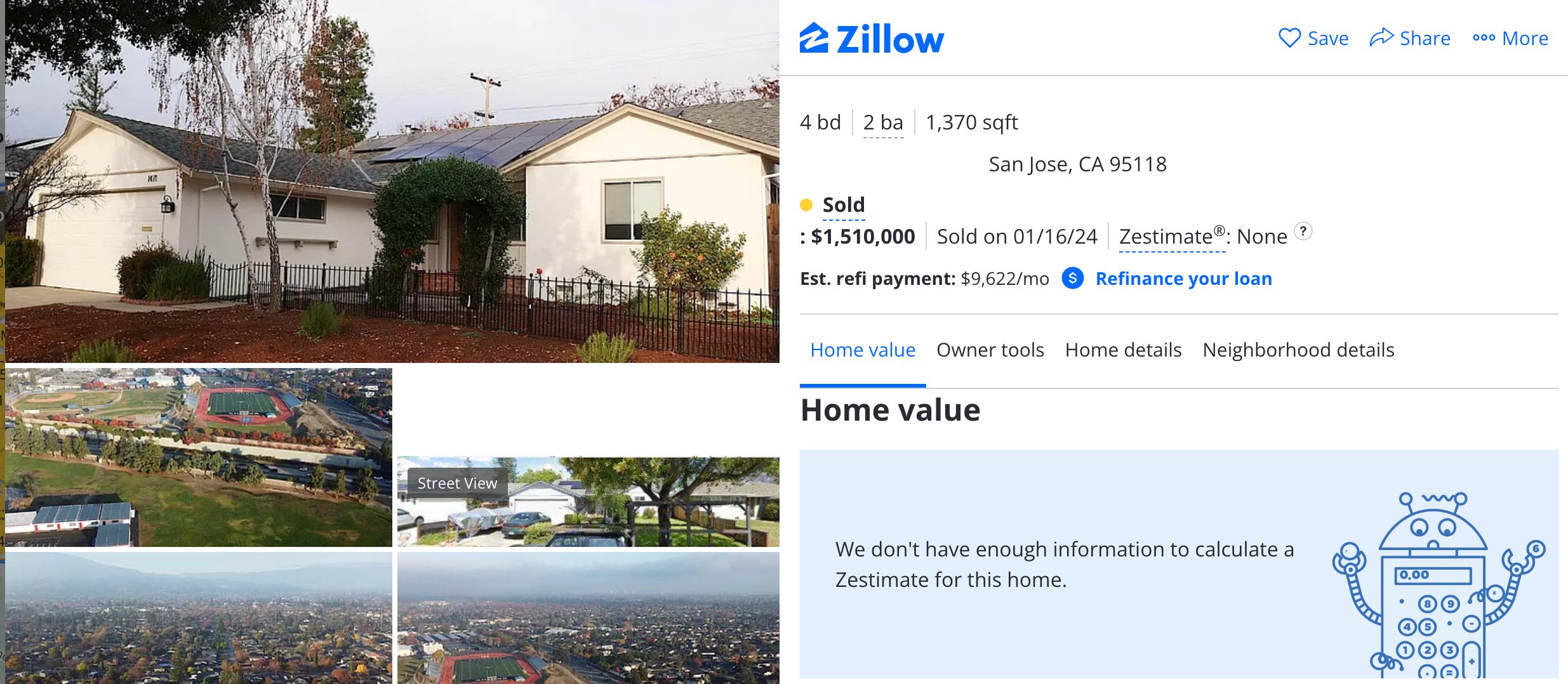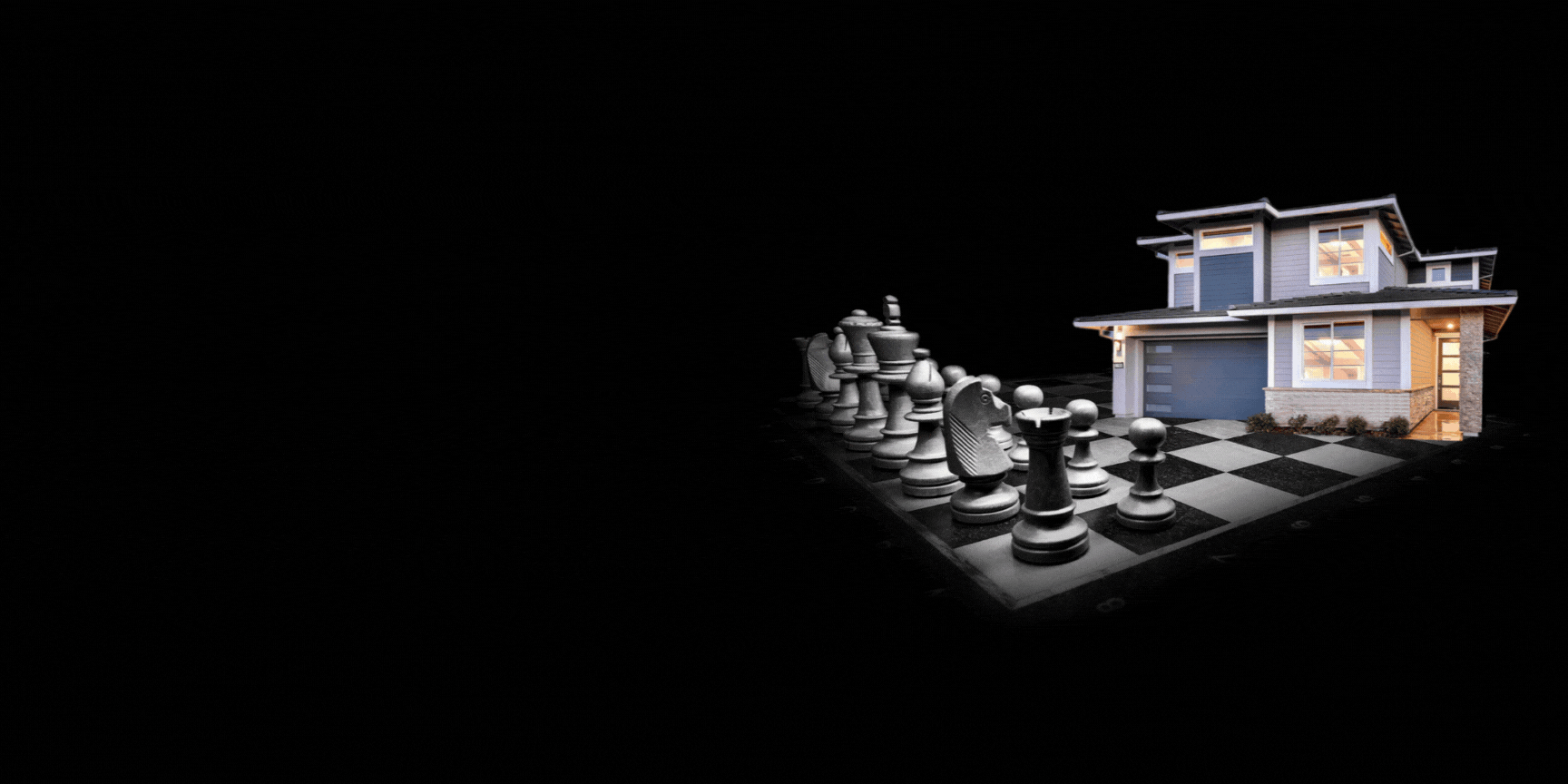Over the years of writing on my blog, I’ve had a lot to say about the Zillow Zestimate, especially as it relates to Bay Area home prices. The Zestimate was created at the dawn of Zillow and it was what really drove traffic to the site, at least in the early years. The Zestimate is nothing more than an automated valuation model (AVM), and there are dozens of them by now (and there were many before the Zestimate even came on the scene). But while the Zestimate has plenty of competition these days, it still garners plenty of attention. But the Zestimate isn’t anything that can be relied on, and I’m going to give you an example of why not, by showing you how I broke the Zillow Home Value Estimator, the famed Zillow Zestimate.
People often wonder how Zillow comes up with its Zestimate. The Zestimate is an algorithm which is proprietary, so it’s impossible for anyone outside of Zillow to tell you how exactly it works. Back in 2019, Zillow announced they had enhanced the Zestimate’s performance by using AI to analyze the listing photos and claimed, at the time, that the Zestimate was accurate to within 2% of the actual sale price (on average). At the time, Zillow said they’d also improved the Zestimate by adding “real-time” data from home sales and added Days on Market as “new keys to the tool.” It’s kind of surprising that “real-time” data and days on market weren’t always part of the Zestimte, but good that it’s part of it now I guess.
Zillow does publish a page on its site that tells you how accurate the Zestimate is, and it’s broken down by metro area as well as by state, and nationally. At the time of writing, Zillow claims that the “median error rate” for San Francisco is 3.11% – which means that for 1/2 the homes sold in San Francisco, the Zestimate is within 3.11% of the sale price…and that 1/2 the time, it’s more than 3.11% wrong.
One thing I feel pretty comfortable saying about the Zillow Zestimate is that it is much, much more accurate in subdivisions made of very similar tract homes, versus rural, mountain, or properties in close proximity to water (or with whitewater views). When Zillow is estimating the value of a tract home and it’s in a neighborhood chock full of homes that were built in the same year, on similar-sized lots, with a relatively tight range of square-footage between the various floor plans, in the same zip code and school district, the Zestimate performs at its best (especially for newer homes – it gets worse as the neighborhood grows older).
The Home that Broke the Zillow Zestimate
So now we come to the interesting case of a tract home I just sold in a the Kooser neighborhood of Cambrian Park in San Jose. It was a fairly ordinary tract home. It had a nice set of owned solar panels, and had been reasonably well maintained. It had been remodeled in the late 1990s, and that’s probably when the roof went on, the dual-pane windows were installed, and the kitchen was remodeled (quality cabinets at the time, but formica counters in an odd configuration). The bathrooms were mostly original from the 1960s, but the water heater was new, and the furnace was only a few years old. The home had been cleaned up for resale, with new interior and exterior paint and a few minor cosmetic improvements like fresh carpet.
So while the home was in good shape, it was functionally obsolete. It didn’t have the open floor plan favored by buyers today. The bedrooms and bathrooms were small. The closets were of course tiny. There was no granite anywhere to be found, nor stainless steel appliances. There was original 1960s oak flooring underneath the new carpet, but it hadn’t been refinished. The back yard was virtually devoid of any landscaping, with only an old, uneven concrete patio. A utility pole was in one corner of the back yard, and a web of utility lines ran over the back yard fence. And, to top if all off, it was on a busy-ish street that was usually quiet during the day but got a lot more traffic during rush hour.
Before I listed the home on the market, the Zillow Zestimate for the home was approximately $1,375,000. In fact, given the comparable sales in the neighborhood, this was honestly a good ballpark figure – right in the middle of the pack from some recent-ish sales of similar-sized homes in the exact same neighborhood.
A funny thing happened though after the sale: all of a sudden, Zillow was unable to provide a Zestimate for the property. It didn’t have a problem before, but once it closed, the Zillow Zestimate for this home was broken. You can see what a “broken Zestimate” looks like in the image below:

Broken Zillow Zestimate
Why the Zillow Zestimate Broke
I have seen instances were Zillow is unable to provide a Zestimate, quite a few times actually. However, this is almost always the case for for properties that are really outside the box – either the lot size is really huge, or the house is really huge on a small lot, or vice versa, there are multiple homes on a single parcel – just something weird about the property that, in all fairness, would make it a challenge to figure out how much the property is worth. So it’s fair enough in these cases for Zillow to say that they don’t have enough information to calculate a Zestimate for these kinds of properties.
The home that I just sold, though? Not one of those kinds of properties at all. It couldn’t be a more normal, vanilla property. So how come, all of a sudden, the Zillow Zestimate broke when the sale closed?
Again, I am not privy to the functionings of the Zillow Zestimate, which are a closely guarded secret. But I’m pretty sure I know why: the sale price for the home was far in excess of what Zillow expected to see.
Selling Over Fair Market Value
Before I listed the home, I had of course done my homework and figured out what I expect the home to sell for. Given the low supply of homes for sale, and the average days on market for recent sales, and that the home was in good condition although lacking spectacular upgrades, I knew the Zestimate of $1,375,000 was low. It did indeed “comp out” at that price (i.e., that would have been the indicated fair market value), but I always want to sell higher than what the comps say. I tell all my clients I want to sell for the absolute highest price the market will bear at the time the home is listed for sale, damn the comps.
Looking at some of the comps (which in cases were larger, and/or in superior condition on quieter streets), and accounting for the lack. of competition (did I mention we put the home on the market during the holidays?) I figured that we’d probably end up being able to sell it for $1,450,000 – possibly $1,475,000 but that would be the most I could ever see it selling for.
But as it happens, we sold it for $1,510,000 – exceeding my own absolute-best-case estimate by $35,000 and the crushing the Zillow Zestimate by 9.8% (or 3x the median error rate Zillow claims for nearby San Francisco). And yet, even at a price which was comfortably above what anyone would have reasonably expected it to sell for, the appraisal came in where it needed to.
How I Beat the Zillow Zestimate
How did I do it? That is another story altogether, and this blog is already running long. I’ll just say that I used my famous two-day sale strategy: we held the home open for only two days, and no showings whatsoever were performed outside of those two open houses. We got a total of eight offers in those two days, so we had a bit of a bidding war. I spent several days negotiating with the various buyers, and one buyer – the absolute best buyer for the home – was ultimately victorious.
But the real winner was the seller. They got their home in San Jose sold quickly with an as-is sale, with a minimum amount of hassle, and for a record-shattering price that Zillow just can’t figure out.
If you’d like to my help getting stellar results like this, please don’t hesitate to contact me. I’d be happy to share with you the secret sauce for getting your home sold quickly, easily, with a minimum of hassle and risk, and for the absolute highest price the market will bear – regardless of what Zillow or “the comps” say it should be.
Wonderful San Jose Homes for Sale
2
3
4
5
6
7
8
9
10
11
12
13
14
15
16
17
18
19
20
21
22
23
24
25



